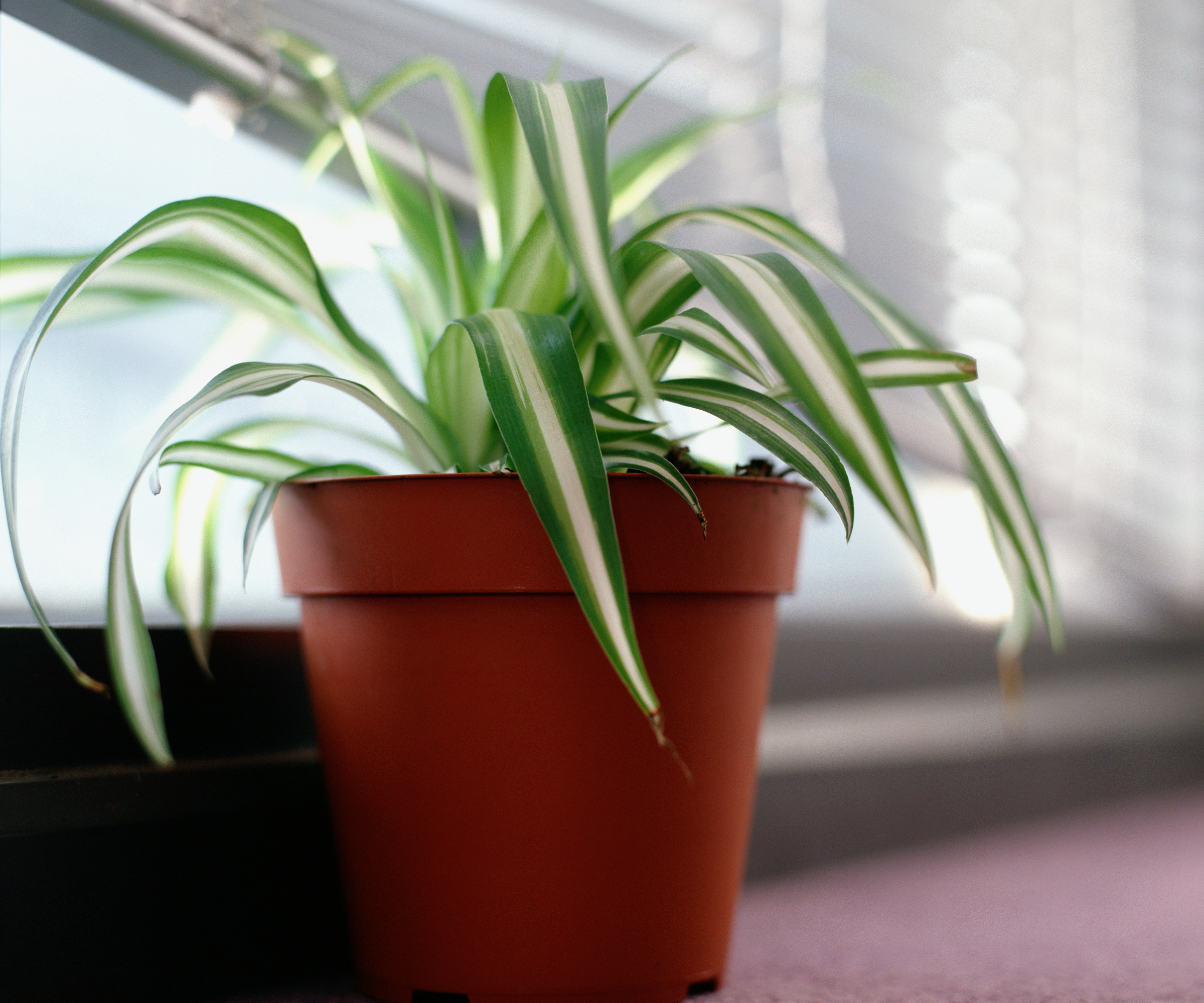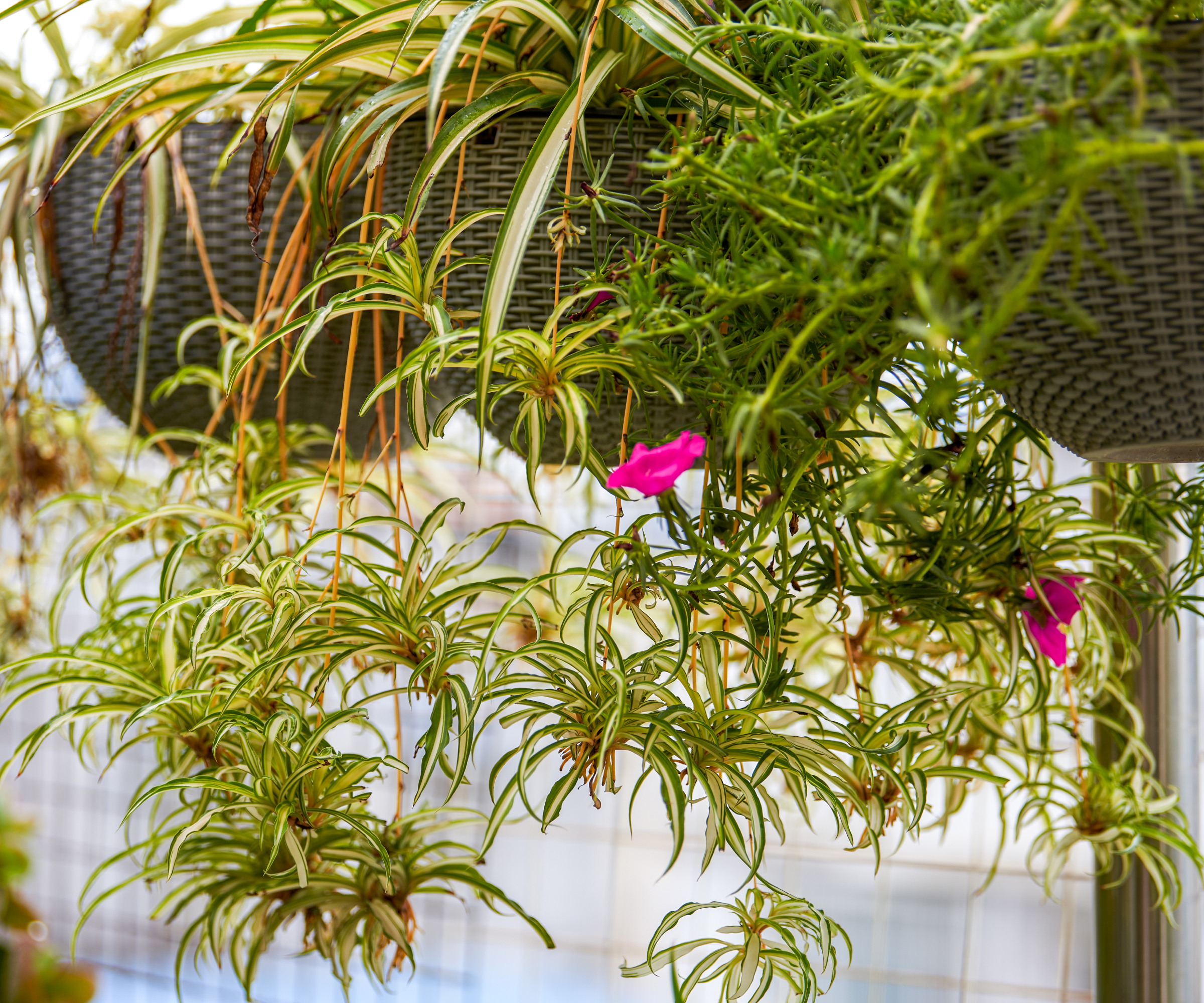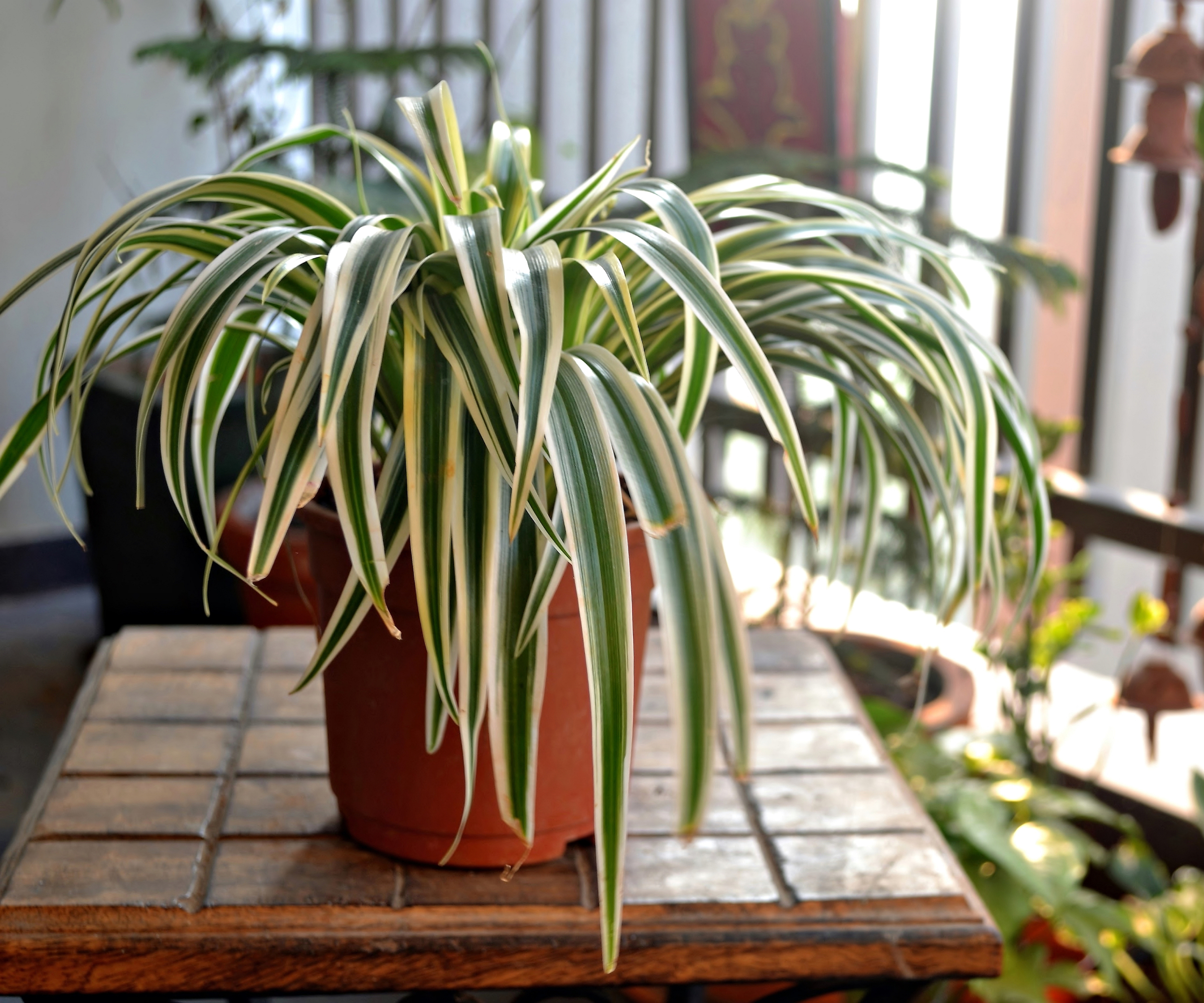How To Care For A Variegated Spider Plant – Plus, Unique Varieties To Try
Variegated spider plants and their streaks of green and cream tones bring interest and light to an indoor room, and will elevate your houseplant collection.

Amy Draiss
You might expect a houseplant named the variegated spider plant (Chlorophytum comosum 'Vittatum') to be somewhat rare and harder to find than other spider plants, but that is not the case at all. In fact, the variegated variety – also called the “variegated airplane plant” - is the most common spider plant around. It's a stunner, with arching, strappy green leaves that have ivory stripes down the center.
Variegated Spider Plant Care
Like all spider plants, 'Vittatum' has a mounding habit and grows miniature baby spider plants on long, pale, arching stems. It's as easy to care for as a houseplant can be and really dresses up a hanging basket.
Light
Variegated spider plant care is not difficult since these tolerant plants accept varying degrees of light exposure. For tip-top results, locate your houseplant where it gets bright indirect light. Direct sun will burn the leaves.

Water
The 'Vittatum' cultivar is a moderate drinker. Provide water every week or 10 days – ideally water without fluoride! - and be sure the container has drain holes. If you use a saucer under it to catch the water, be sure to empty it out after watering the spider plant. The plant does not like wet soil.
Temperature & Humidity
If you are comfortable with the temperature inside your home, your spider plant will likely be as well. Spiders appreciate temperatures between 50 and 60 degrees F at night and between 60 and 70 degrees F during the day. Medium air humidity is best, but these tough houseplants accept dry air as well. You can sit the pot on a pebble tray to increase the humidity if you like.
Soil
Spider plants are not picky about soil. Any average potting soil will do fine as long as it drains well. Remember, these plants will tolerate many conditions but wet soil is not among them. If you pot them up in clay soil that holds water, the roots will likely rot.
Fertilizer
You can offer your plant a light dose of fertilizer during the growing season if you like, but better none at all than too much. Variegated spider plants are sensitive to excess fertilizer. In addition, too much fertilizer will limit baby production.
Sign up for the Gardening Know How newsletter today and receive a free copy of our e-book "How to Grow Delicious Tomatoes".
Problems, Pests & Diseases
This spider plant will not be happy if you fail to meet its essential cultural needs – and it will demonstrate its frustration clearly. If you accidentally expose it to direct sun, the leaf tips will burn. If you plant it in clay soil, the roots will rot and the plant will die. Too much fertilizer will burn the plant. In addition, the spider plant is subject to the usual suspects when it comes to insect pests, including whiteflies, spider mites, scales, and aphids.
Pruning
Pruning is not an essential part of spider plant care. When it comes to 'Vittatum', you should snip off brown or burned leaves, but, otherwise, no trimming is necessary.

Propagation
Baby spider plants are so cute and fun that to many people, they are the best part of growing a variegated spider plant. They grow in as true miniature spider plants, dangling on long, arching steps. Over time, each baby gets larger and develops a root system. You can allow them to root in the parent plant's soil or in the soil on the ground if grown outdoors. I like to clip them off and propagate the spiderettes in their own little pots, then offer them to my neighbors.
You can also propagate a spider plant by division. This is a good solution when the fleshy roots fill the container to bursting. Remove the plant from its pot, slice it into two or three sections, then plant each one in its own pot.
Repotting
Instead of dividing a spider plant variegated version when the roots fill up the pot, you can repot the spider plant. Remove the plant from its container, prune back the roots a little and separate them, then repot it into a larger container with fresh potting soil. You want to give the roots a little more space while keeping them somewhat rootbound. You can repot at any point throughout the year when it is needed.
Variegated Spider Plant Varieties

The classic variegated spider plant is the 'Vittatum' cultivar. Its long, thin leaves grow in bright green with a creamy white stripe down the middle.
A similar plant is the so-called reverse variegated spider plant, Chlorophytum comosum 'Variegatum'. It offers the same colors but a slightly different arrangement. The leaves are bright green in the center with cream colored borders.
A third variegated “cousin” is the curly leaf spider plant, Chlorophytum comosum 'Bonnie.' Its color scheme is like 'Vittatum' – with a little more yellow in the cream color – but the leaves look like someone rolled them up in curlers the night before.
Frequently Asked Questions
Are variegated spider plants rare?
Variegated spider plants are beautiful, striking, and whimsical, but they are not rare. In fact, 'Vittatum' is among the most common spider plants available in commerce.
What is the difference between variegated and non-variegated spider plants?
Non-variegated spider plants have solid green leaves, like the 'Green Shamrock' spider plant. Variegated spider plants have two or more hues, often including stripes down the center of the leaves or border banding.

Teo Spengler is a master gardener and a docent at the San Francisco Botanical Garden, where she hosts public tours. She has studied horticulture and written about nature, trees, plants, and gardening for more than two decades, following a career as an attorney and legal writer. Her extended family includes some 30 houseplants and hundreds of outdoor plants, including 250 trees, which are her main passion. Spengler currently splits her life between San Francisco and the French Basque Country, though she was raised in Alaska, giving her experience of gardening in a range of climates.
- Amy DraissDigital Community Manager